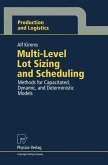This book provides an original theoretical framework for assessing public investment policies co-financed by Union (Federal) governments. This framework is applied to two important case studies: the EU Cohesion Policy and the US Federal Investment Policies. Cost-Benefit Analysis of Multi-Level Government sheds light on a number of outstanding issues of economic theory by extending the theory of shadow prices, and provides guidance to real-world decision makers. In particular, the following questions are addressed: In which circumstances is intervention by higher level government in Member States through investment policies justified? Is there a welfare economics rationale to underpin interregional equity? What is the relationship between interregional and interpersonal income distribution? How can social exclusion be included in cost-benefit tests? How can a higher level of government allocate financial resources to investment policies before it bargains over the related programming documents with lower levels of government? In these circumstances, how can optimal matching rates be derived under binding or non binding budgetary constraints? How can such an analytical framework provide guidance for real-world decision makers? Guidelines such as the Impact Assessment Guidelines (European Commission), the Green Book (British Treasury), and Guidelines and Discount Rates for Benefit-Cost Analysis of Federal Programs (Executive Office of the US President) are also analyzed. The book will be of interest to policy makers, postgraduate students and researchers in cost-benefit analysis, welfare economics, public choice, public finance, multi-level government economics, and income distribution issues.
Hinweis: Dieser Artikel kann nur an eine deutsche Lieferadresse ausgeliefert werden.
Hinweis: Dieser Artikel kann nur an eine deutsche Lieferadresse ausgeliefert werden.








